Check out professional journey of Mads Hagbarth Damsbo.
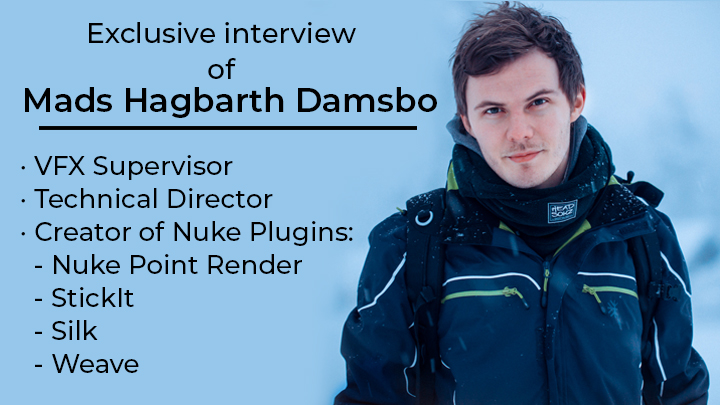
Mads Hagbarth Damsbo is VFX artist, Supervisor and Technical Director. Hagbarth has immense knowledge and practical experience in VFX for TV and feature film, motion graphics design and VFX Technical Research & Development. He has worked on a wide range of movies and broadcast mediums. He worked as a Visual Effects supervisor for Heartless and Juleønsket. Hagbarth has created mind blowing Nuke plugins including Nuke Point Render, StickIt, Silk and Weave.
Hagbarth’s software specialties includes Nuke, Nuke Studio, Fusion, After Effects, Cinema 4D, PF tack, Photoshop, Illustrator, Indesign, Thinkbox Deadline, Shotgun.
Experts of his technical interview are as follows.
Hi Hagbarth. Please let us know about your educational background.
I have a bachelor’s degree in Interactive Design and Visual Communication from the Danish School of Media & Journalism. Most of my knowledge about Compositing and VFX in general is self taught along with a good dose of fxphd.
How you inclined towards the VFX industry?
I have always dreamed of becoming a compositor. Mostly inspired by 2000’s advertising and movies. We had a couple of really awesome post houses here in Denmark that just continued to amaze and inspire.
Please share detailed credentials of your professional career.
I started out as a compositor and motion designer at a small post house called Postyr, in Copenhagen Denmark. I was hired to a staff position after a internship during my bachelor. I slowly moved towards a more of a technical director role and ended up as a VFX supervisor. Later i joined Nordisk Film Shortcut where I am currently, in much of the same roles, spanning from Compositor, Comp TD and Pipeline TD, and a few times Supervisor.
As a junior artist it was really nice joining a rather small post house, as it gave me a much wider range of tasks and work areas, and in turn expanding my knowledge beyond just basic compositing. All areas of production from concept through pre-production to production to post-production, finishing and delivery.
Knowing a bit about every step of production, and having a bit of hands on experience gives you a huge advantage in your day to day life and also strengthens your position. The downside of working in this smaller studio was the fact that I was mainly working on projects that were in the lower end of the budget scale, and it was usually quantity over quality or at least shots that never really got enough finish to make it worthy of a reel.
So back in 2013, I started a small blog on my portfolio website. As i didn’t have a reel back then i thought it could be a good way of promoting myself, and getting my name out there. It was inspired by artists like Theodor Groeneboom (Framestore) who posted really cool articles on his site back then.
After making a video about a 2D match moving tool I made Nuke plugin called StickIt (essentially a low key version of the Nuke Smart Vectors, before SmartVectors were a thing) I slowly started to receive job offers from some of the major studios around the world. It was really amazing and gratifying to get that kind of “feedback” on the articles I put up.
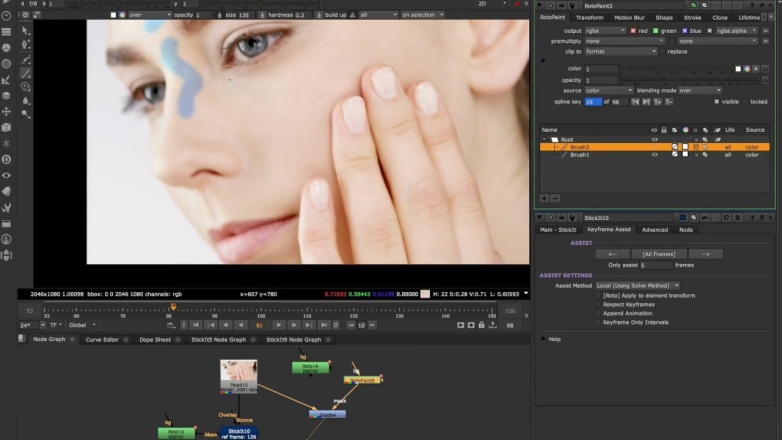
The thought of moving to the UK or Australia was thoroughly considered many times, but it was just a bit to hard for me to part with my girlfriend, family and friends. But the recognition really boosted my motivation to do even more R&D and make more tools. I also managed to befriend many of the people whom I looked up to, and that in turn gave me even greater insight into some of the workflows and challenges of the big studios.
Check out vimeo videos of his other tools.
Silk: https://vimeo.com/195532256 and https://vimeo.com/195883171
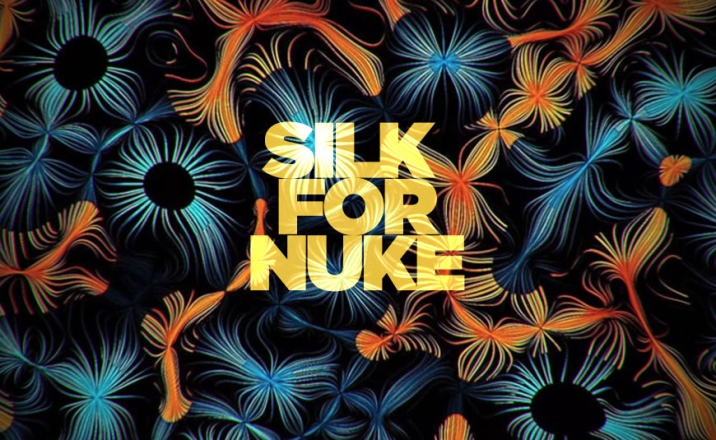
Weave: https://vimeo.com/231272036
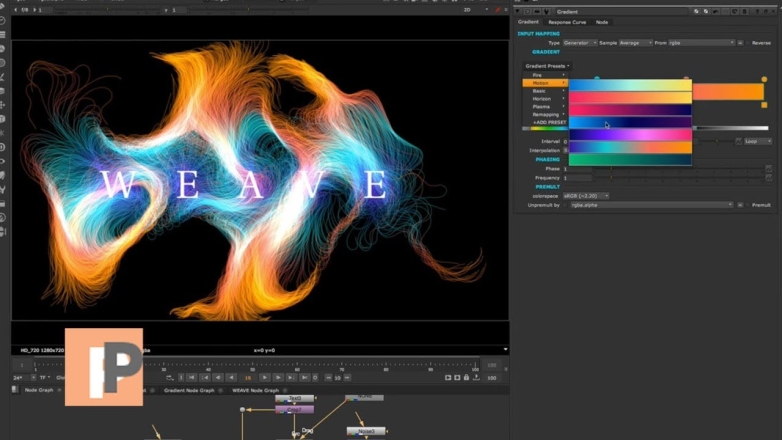
What is your standard workflow when you start writing new Nuke plugin / tool?
I guess curiosity is the driving force behind most of my tools. There is no set recipe of workflow to speak of as every project seem to have it’s own path from start to finish.
But generally speaking, I love to source inspiration from outside of the VFX industry. I think many fall into the trap of being too obsessed with what other studios are doing, rather than to look around and see what other industries are doing. And for visual tools, look at the real world rather than the latest blockbuster.
Which programming languages are you using for scripting of Nuke plug in and why?
I use a lot of Python at work, mainly for pipeline work. It’s a generally good skill to have, both in 3D and 2D workflows. I always recommend students and young artists to take the extra time and get themselves familiarized with Python.
I also use a lot of TCL, mainly in the context of the Nuke “Expression” node. It’s a super neat and versatile node, that can be used to quickly solve a math problem on your comp plates. This is also a node I would highly recommend everyone doing comp work, to just have a basic understanding of.
And lastly we have BlinkScript. Due to time constraints I rarely use it at work, but I use it a lot for my personal projects. It is something you usually need a tad more time to work on, but it gives you an incredible amount of power and flexibility. If your expression nodes start to limit you, I would recommend that you take a look at the BlinkScript node. It might be a tad more technical, but once you get your head around the basics, it can become a really awesome tool for doing more complex tools and task.
I also do a tiny bit of Objective C (developing iPhone apps). This is something I have been doing as a spare time job and turned it into something I can use at work, for example on-set tools etc.
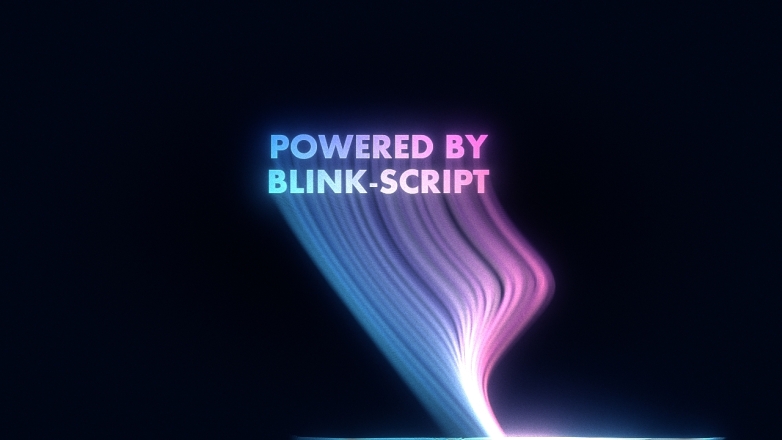
Why all your tools are Nuke plugins? Do you do R&D for other node based and layer based softwares?
The reason why I do all my tools in Nuke, is because Nuke is the tool we use at work and thus I can use every single tool I make, at work.
I also have a good relationship with some of the Nuke developers which is good when you have questions about things that support can’t directly answer. I also really love the structure of nuke tools, and it’s easy to prototype ideas in this kind of node environment. While I would love to get more into Houdini at some point, (as it is all that Nuke is, just much more), the limitations of Nuke can also drive a lot of creativity.
Your all tools are great but ‘Nuke Point Render’ is a benchmark. Please tell us about What is Nuke Point Render, from inception idea to final Nuke plugin.
I have always been very fond of the many cool motion design plugins that are available for After Effects. The Trapcode Suite, Plexus, Element 3D etc. It’s not plugins that try to make super realistic outputs but rather fast, intuitive and interactive tools that boost your creativity and makes it fast to iterate and try out new ideas.
Nuke only have Artixel’s Resonance plugin, which is super cool, but also quite limited in scope. And like many other compers, I find that Nuke’s particle system is quite lackluster. It just screams for some more attention from Foundry. So, I originally pitched the idea of a point render to Foundry during a sales presentation. It should be a combination of the Nuke PositionToPoints node and some very basic rendering, with filtering. But the idea never really came through.
Fast forward to 4 years ago, where I did some study on using the Nuke BlinkScript node to do 3D rendering and voxel rendering. Once I managed to get the node to render out something that was 1:1 with the scanline render, I knew I was onto something. It was a really fun and creative period, where I was making new discoveries on a daily basis, like: now I can do point rendering, what about wires? facets? and what about depth of field?
My friend Xavier Martín, (an FX artists from ILM), provided me with feedback, ideas and insights that helped me shape many of the fractal and shading aspects of the tool. He got some of the very early versions of the tool, and just blew me away with what he could come up with. It’s always interesting to give your tool to someone, and they take that tool and make something you never even thought it was able to do.
Lars Wemmje who is a senior compositor and 3D generalist, known for his great Nukepedia videos, offered to create a visual identity for me. That is all the icons, color palettes, logos etc. It was such a relief and helped push the project forward. Because for me when I work on a tool, and it has so many small aspects to it, turning my head from being a “developer” into a “graphics designer” takes me out for the “zone”, or “mental state” that I am in, and as such it can really hurt progress. So for someone to take up that part of the project for me, was really invaluable.
And as I have so many other projects that I am working on, it would take another year before the tool was made available.
Check out the mind blowing video of Nuke Point Render.
How does Foundry support you for your R&D?
They provide me with a free developer license, where I get all of the Nuke Products to experiment with. Most of the things I work on can’t be done with the Nuke non-commercial license, so this is invaluable to me.
How are you associated with ‘Nordisk Film Shortcut’?
Nordisk Film Shortcut is a Danish post house that does Online, VFX, Grading, Audio and Mastering on Features and TV-Series.
I joined Nordisk Film Shortcut back in 2016, where i took over the Nuke pipeline development. The comp and 3D department have nearly doubled since i joined the company so it’s been amazing journey so far.
What are your next goals?
The next big project is getting more into deep learning. It’s interesting to see that challenges that we as compositors have had since the dawn of the industry, such as keying and roto, for example, finally got one-click solutions in sight.
There are so many ideas that I want to explore in this area, and I can’t wait to get started (once I am done with all the project’s I have in the pipeline right now).
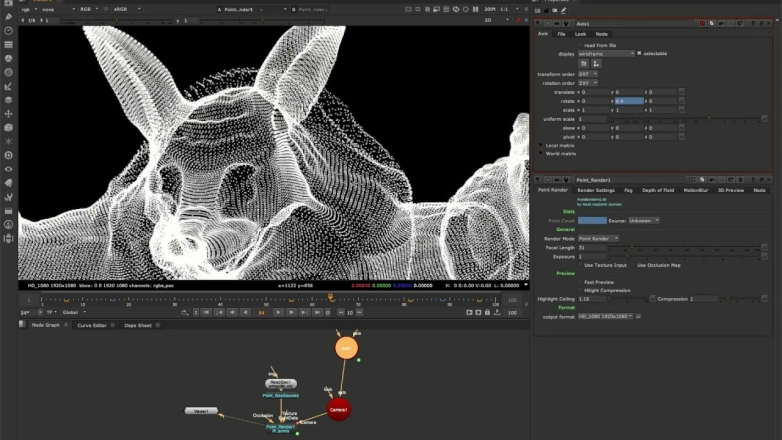
The Virtual Assist thanks Mads Hagbarth again for such in-depth technical interview. Looking forward for more great Nuke plugins / tools to revolutionize the Visual Effects industry.
